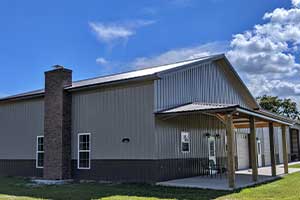
36977 Park Avenue
Burney, CA. 96013
530-335-5421 x140
Burney, CA has nearby treatment options including: 3 medicare treatment centers, 0 inpatient rehab, 3 drug rehabs that take private insurance like Blue Cross Blue Shield, 1 drug detox, 4 outpatient treatment programs.

For help finding an addiction treatment center, Call us!
All calls are 100% confidential and free
1-877-882-9275


County of Siskiyou is 39.4 miles from Burney, California
County of Siskiyou provides addiction treatment and rehabilitation services such as long term rehab centers, outpatient day treatment, inpatient treatment facilities, short term drug and alcohol rehabs, inpatient detoxification centers, and others to people living in Burney and its surrounding areas so that they conquer their alcohol and drug abuse issues and achieve full sobriety. It has services - such as group therapy, 12-step facilitation approach, substance abuse counseling approach, relapse prevention, individual psychotherapy, dual diagnosis drug rehab, and others - which follow its philosophy of the programs that work most effectively. This is because County of Siskiyou believes that full recovery can only be achieved through highly individualized and personalized care.
Further, the addiction treatment facility specializes in many other programs - like active duty military, treatment for spanish-speaking clients, transgender or (LGBT) clients, child care for clients children, legal advocacy, clients referred from the court/judicial system and more - as well as many other treatment methods listed below. Further, this addiction treatment center has aftercare programs that work in line with its treatment modalities to ensure that individuals achieve and maintain full, lasting, and permanent abstinence and sobriety from drugs and alcohol.
Lastly, County of Siskiyou accepts cash or self-payment, private insurance, military insurance, payment assistance, state education funds, county or local government funds, and more.


Psychiatric Care Center is 42.3 miles from Burney, CA


Redding Rancheria Tribal Health Center is 42.9 miles from Burney, California
Redding Rancheria Tribal Health Center provides recovery care and rehab services such as long term drug treatment, outpatient substance abuse treatment services, inpatient drug and alcohol rehab centers, short term drug rehab programs, outpatient detox programs, and others to clients living in the Burney, California area so that they overcome their alcohol and drug use disorders and find full sobriety. It has services - such as group therapy, 12-step facilitation approach, substance abuse counseling approach, relapse prevention, individual psychotherapy, dual diagnosis drug rehab, and others - which follow its philosophy of the programs that work most effectively. This is because Redding Rancheria Tribal Health Center believes that full recovery can only be achieved through highly individualized care.
Further, the drug and alcohol treatment program specializes in many other programs - like active duty military, treatment for spanish-speaking clients, transgender or (LGBT) clients, child care for clients children, legal advocacy, clients referred from the court/judicial system and more - as well as many other treatment modalities that you can find listed below. Further, this alcohol and drug rehab has aftercare plans that work in line with its treatment modalities to make sure that individuals achieve and maintain full, lasting, and permanent sobriety, stability, and abstinence from drugs and alcohol.
Lastly, Redding Rancheria Tribal Health Center accepts cash or self-payment, private insurance, military insurance, payment assistance, state education funds, county or local government funds, and more.
"The 12-step method for treating addiction is a structured, peer-based approach that originated with Alcoholics Anonymous (AA) in the 1930s. Since then, it has been adapted for various other substance use disorders and behavioral addictions, including Narcotics Anonymous (NA), Gamblers Anonymous (GA), and Overeaters Anonymous (OA), among others. The method is based on a set of guiding principles, known as the 12 steps, that outline a path to recovery, personal growth, and spiritual development.
The 12 steps of the method are as follows:
The 12-step method emphasizes the importance of peer support, mutual aid, and the sharing of personal experiences as a means of overcoming addiction. Participants typically attend regular meetings, where they share their stories, listen to others, and work through the steps at their own pace. Many 12-step programs also encourage members to find a sponsor, an experienced member who has worked through the steps and can provide guidance, support, and accountability during the recovery process."
Drug addiction, also known as Substance Use Disorder (SUD), is a complex condition that affects an individual's brain and behavior, leading to an inability to control the use of drugs despite harmful consequences. Drug addiction can impact a person in various ways, including physical, psychological, social, and emotional aspects of their life. Some of the effects of drug addiction include:
Fentanyl is a synthetic opioid that is 50 to 100 times more potent than morphine. It is used medically to treat severe pain, but its potent nature also makes it dangerous when misused or taken in excessive amounts. When a person overdoses on fentanyl, several life-threatening symptoms and complications can occur:
If you suspect someone is experiencing a fentanyl overdose, it is crucial to call emergency medical services immediately. Administering naloxone, an opioid antagonist, can temporarily reverse the effects of the overdose, but multiple doses may be needed due to fentanyl's potency. It is essential to note that naloxone is not a substitute for professional medical care, and the person must still receive prompt medical attention to address any underlying complications and ensure proper treatment.
National Non Profit Helpline - 1-877-882-9275
Our National Non Profit Helpline is a 24/7, 365-day-a-year treatment referral and information service for individuals and families faced with mental and/or substance use disorders.
All calls are strictly confidential
Our service provides referrals to licensed treatment facilities, support groups, and community-based organizations. You don't have to struggle alone with addiction. Help is just a phone call away. Call 1-877-882-9275 now to get the help you need and deserve.
© Copyright 1998 - 2022 All Rights Reserved. Content is protected under copyright laws, do not use content without written permission.